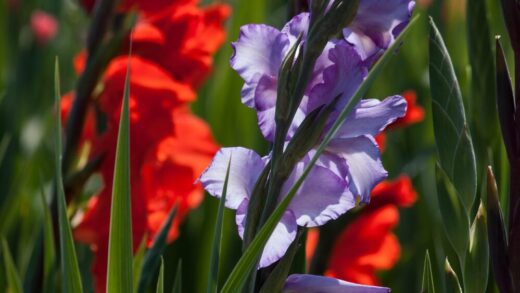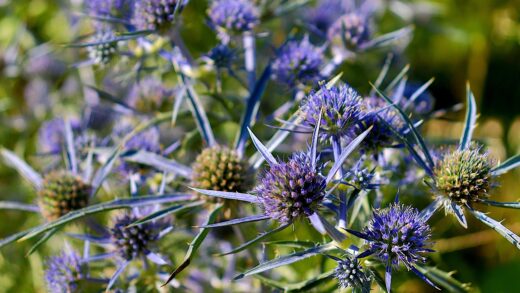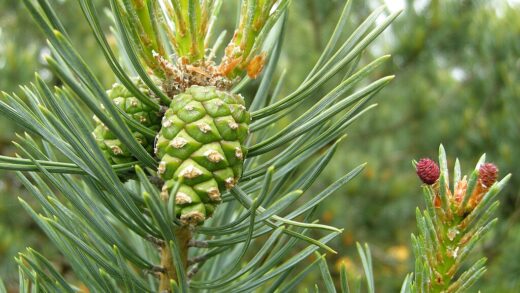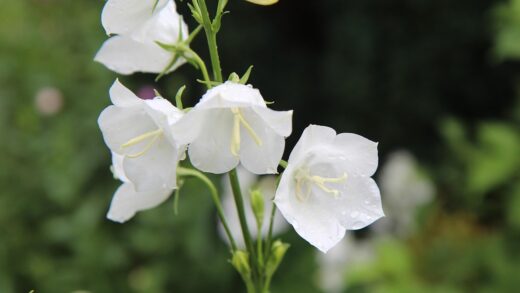The Atlas cedar, with its origins in the high-altitude Atlas Mountains, is inherently well-equipped to handle cold and snow, making it a hardy and resilient choice for many temperate climates. However, preparing the tree for the winter season, especially when it is young and newly established, is a crucial step to ensure it not only survives but thrives. Proper overwintering practices focus on mitigating the specific challenges of winter, such as moisture loss, sunscald, and physical damage from snow and ice. By taking a few preventative measures in the autumn, you can safeguard your cedar and ensure it emerges in the spring healthy and ready for a new season of growth.
One of the most significant threats to evergreens like the Atlas cedar during winter is desiccation, also known as winter burn. This occurs when the tree loses water through its needles due to sun and wind, while the frozen ground prevents its roots from absorbing more moisture to replenish the loss. The result is dry, brown, and “burned” looking foliage, typically on the side of the tree exposed to the prevailing winds and afternoon sun. Young, recently planted trees with less extensive root systems are particularly vulnerable to this type of injury.
To combat winter desiccation, the most important preparatory step is to ensure the tree is thoroughly hydrated before the ground freezes. If autumn rainfall has been sparse, provide several deep, slow waterings throughout the season, with a final, very thorough soaking a week or two before you expect the first hard freeze. This ensures the soil around the root zone is moist and the tree’s tissues are fully charged with water, creating a reservoir that it can draw upon throughout the winter months.
Applying a layer of mulch is another essential component of winter preparation. A three- to four-inch layer of organic mulch, such as wood chips or pine straw, spread over the root zone acts as a protective blanket. It helps to insulate the soil, which reduces the depth of the frost line and protects the roots from extreme temperature fluctuations. This insulation can also slow the freezing of the ground, allowing the roots to continue absorbing water for a longer period into the late autumn. As with any mulching, be sure to keep it a few inches away from the trunk itself to prevent moisture buildup and potential rot.
For particularly vulnerable or prized young specimens in exposed locations, constructing a physical barrier can provide additional protection. A simple screen made of burlap stretched between stakes on the south and west sides of the tree can shield it from the harshest winter sun and drying winds. This barrier should be placed a foot or so away from the branches to allow for air circulation and should not be wrapped tightly around the tree, as this can trap moisture and cause its own set of problems.
More articles on this topic
Understanding winter hardiness
The ability of an Atlas cedar to withstand winter conditions is defined by its genetic hardiness, which is rated according to specific climate zones. The standard Cedrus atlantica is generally considered hardy to USDA Zone 6, meaning it can reliably tolerate minimum winter temperatures between -10 and 0 degrees Fahrenheit (-23 to -18 degrees Celsius). It is crucial to select a tree that is appropriate for your specific climate zone, as planting a species outside of its hardiness range is a recipe for failure, regardless of the protective measures taken.
A tree’s hardiness is not just about surviving a single cold night; it is about its ability to withstand the cumulative stresses of the entire winter season. This includes temperature fluctuations, frozen soil, drying winds, and the weight of snow and ice. A tree’s health going into the winter plays a significant role in its ability to endure these challenges. A well-nourished, properly hydrated tree that is free from pests and diseases will be far more resilient and winter-hardy than one that is already stressed.
The process of acclimatization, or “hardening off,” is a natural phenomenon that trees undergo in the autumn as temperatures cool and daylight hours shorten. This physiological process prepares the tree for freezing temperatures by slowing its growth, moving sugars into the root system for storage, and reducing the water content within its cells to prevent ice crystal formation that could cause them to rupture. It is vital not to disrupt this process by applying high-nitrogen fertilizer late in the season, which would encourage tender new growth that cannot properly harden off before winter.
It is also important to understand that microclimates within your own garden can significantly impact a tree’s winter survival. A location that is sheltered from wind by a building or other trees will be much more protected than an open, exposed site. Similarly, a spot near a south-facing wall may be warmer but also subject to more damaging freeze-thaw cycles. Carefully considering these microclimates when choosing a planting location can enhance the overwintering success of a tree that might be borderline for your region’s hardiness zone.
More articles on this topic
Protection for young trees
Young and newly planted Atlas cedars require the most attention when it comes to winter protection, as their limited root systems make them more susceptible to desiccation and their thin bark is more vulnerable to injury. For the first two to three winters after planting, taking extra precautions is a wise investment in the tree’s long-term health. These protective measures are designed to shield the young tree from the harshest elements until it has developed the size and root structure to be self-sufficient.
One of the primary concerns for young trees is sunscald, a condition where the bark on the southwest side of the trunk freezes and thaws repeatedly on sunny winter days. This causes the bark to split and crack, creating wounds that can provide an entry point for diseases and insects. To prevent this, you can wrap the trunk with a commercial tree wrap or a plastic tree guard. The wrap should be applied in the late autumn and removed promptly in the spring to prevent it from constricting the trunk’s growth and trapping moisture.
Protecting young cedars from animal damage is also crucial. Rabbits and voles can gnaw on the tender bark at the base of the trunk during the winter when other food sources are scarce. This can girdle the tree, effectively cutting off its circulatory system and killing it. Installing a cylinder of hardware cloth or a rigid plastic tree guard around the base of the trunk is the most effective way to prevent this type of damage. The guard should extend from the soil line to above the expected snow depth and should be loose enough to allow for air circulation.
In regions that receive heavy, wet snow or ice storms, the branches of a young cedar can be prone to bending and breaking under the weight. While upright, pyramidal forms are naturally good at shedding snow, it can still be a concern. If a heavy snow load accumulates, you can gently brush it off the branches with a broom, using an upward sweeping motion to lift the branches rather than pushing down on them. For very young or columnar varieties, loosely tying the branches together with soft twine can provide extra support and prevent them from splaying open under the weight of ice or snow.
Mulching and soil insulation
Mulching is one of the most beneficial practices for overwintering an Atlas cedar, providing a critical layer of insulation for the root system. The primary goal of winter mulching is not to keep the ground warm, but rather to keep it consistently cold. By insulating the soil, mulch helps to prevent the damaging freeze-thaw cycles that can heave a young tree out of the ground and damage its delicate surface roots. A stable, frozen soil temperature is less stressful for the dormant root system.
The ideal time to apply winter mulch is in the late autumn, after the first light frost but before the ground freezes solid. Applying it too early, when the ground is still warm, can delay the tree’s dormancy and trap excess heat and moisture, which may encourage root rot. A three- to four-inch layer of organic material like shredded bark, wood chips, or pine needles is ideal. These materials create an effective insulating layer that still allows for some air and water exchange.
When applying the mulch, create a wide ring that extends out to the tree’s drip line or beyond. This ensures that the majority of the active root zone is protected. The most critical rule of mulching is to never pile it directly against the trunk of the tree. This “volcano mulching” technique is extremely harmful, as it traps moisture against the bark, which can lead to decay, fungal diseases, and can also provide a hidden refuge for rodents like voles to chew on the bark undetected. Always leave a few inches of clear space around the base of the trunk.
In the spring, as the ground begins to thaw, you should check the condition of the mulch layer. It may have compacted over the winter and could benefit from being gently raked or fluffed up to improve aeration. If the layer is thin, you can replenish it with fresh mulch to prepare for the upcoming growing season. This year-round commitment to mulching provides continuous benefits, from winter insulation and summer moisture conservation to long-term soil health improvement as the organic material breaks down.


















